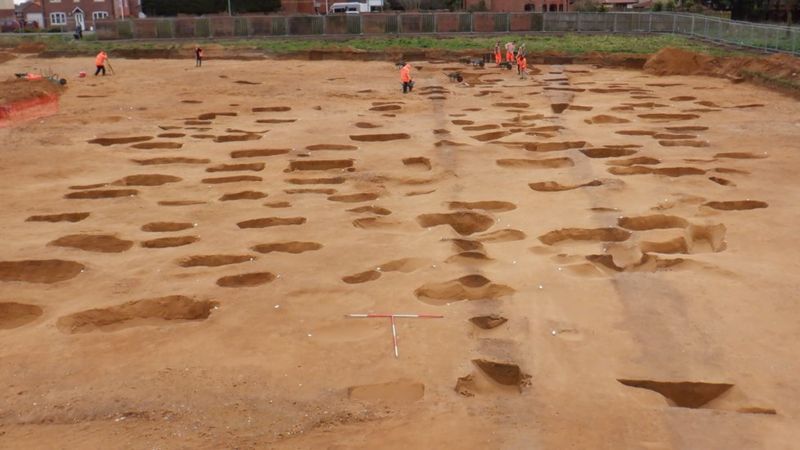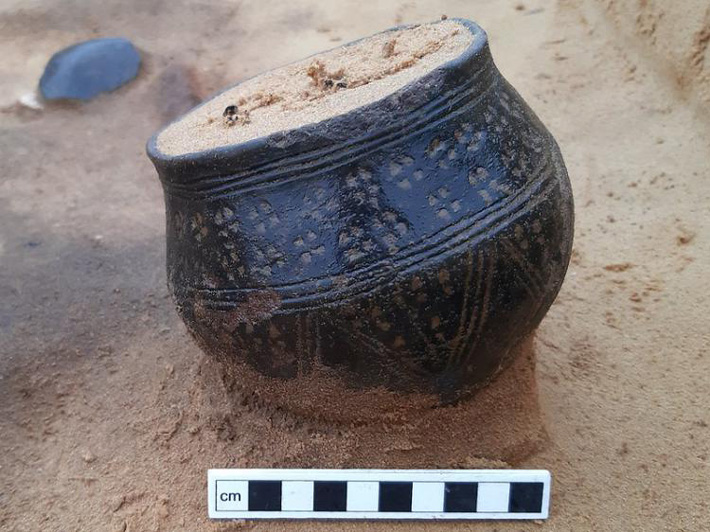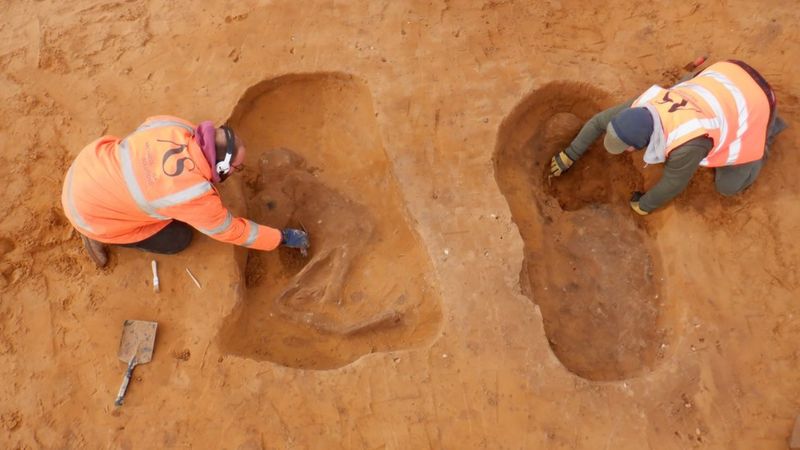Anglo-Saxon Cemetery Excavated in the East of England
BBC News reports that an Anglo-Saxon cemetery that may date to the sixth century A.D has been found at a site slated for residential development in the East of England, within the border of the Kingdom of the East Angles.

Brooches, pottery, small iron knives, wrist clasps, amber and glass beads, and silver pennies were uncovered among the more than 200 burials.
The grave included the bones of men , women and children and objects including brooches, small iron knives and silver pennies. Suffolk’s Archaeological Service said studies would help establish the graveyard’s links to other local sites
A spokesman said the site “lies within the Kingdom of the East Angles, made famous by the royal burial ground at nearby Sutton Hoo”.
Sutton Hoo, discovered in 1939, included two cemeteries from the 6th to 7th centuries and a ship burial full of treasures believed to be the final resting place of King Raedwald.

Many of the skeletons are only visible as “sand-silhouettes”, a delicate form of preservation.
The site appears to contain several generations of a small farming community and the county council’s archaeological service said the excavation of such cemeteries in their entirety was rare in England, which made it “nationally significant”.
“It is important we oversee and record this work so that we can understand the community buried here and its connections to other finds in Oulton and the nearby settlements and cemeteries at Carlton Colville and Flixton,” said the spokesman.

Andrew Peachey, of Archaeological Solutions Ltd, which carried out the excavations, said the remains of 17 cremations and 191 burials were “painstakingly excavated”.
“Due to the highly acidic soil the skeletons had mostly vanished and were luckily preserved as fragile shapes and shadows in the sand,” he said.
Mr Peachey added many of the artefacts were so fragile they had “to be block-lifted for micro-excavation in the labs at Norfolk Museum Service”.

The remains have now been fully excavated ahead of the Persimmon Homes Anglia housing development.
They will undergo specialist analysis and eventually go on public display.





